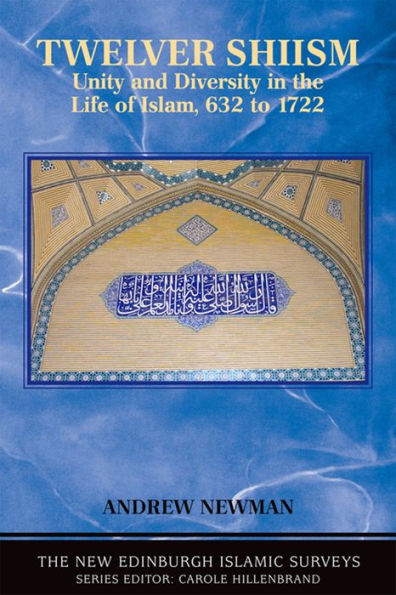As many as 40 different Shìi groups existed in the 9th and 10th centuries yet only 3 forms have survived. Why is Twelver Shìism one of them
As the established faith in modern Iran, the majority faith in Iraq and areas in the Gulf and with its adherents forming sizeable minorities elsewhere in the region, Twelver Shi'ism is arguably the most successful branch of Shi'ism. Andrew J. Newman chronicles the progression of Twelver Shiism, exploring the numerous external challenges and internal disagreements that marked the lives of believers in pockets across the Middle East to the early 18th century. During this time, from the 13th to the 15th century especially, with scholarly activity and the availability of earlier key texts of the faith limited, the region's many millenarian doctrines and movements threatened its demise. Only by the late 17th century was Twelver Shiism's survival assured, both in Iran and elsewhere in the region.
1115398888
As the established faith in modern Iran, the majority faith in Iraq and areas in the Gulf and with its adherents forming sizeable minorities elsewhere in the region, Twelver Shi'ism is arguably the most successful branch of Shi'ism. Andrew J. Newman chronicles the progression of Twelver Shiism, exploring the numerous external challenges and internal disagreements that marked the lives of believers in pockets across the Middle East to the early 18th century. During this time, from the 13th to the 15th century especially, with scholarly activity and the availability of earlier key texts of the faith limited, the region's many millenarian doctrines and movements threatened its demise. Only by the late 17th century was Twelver Shiism's survival assured, both in Iran and elsewhere in the region.
Twelver Shiism: Unity and Diversity in the Life of Islam, 632 to 1722
As many as 40 different Shìi groups existed in the 9th and 10th centuries yet only 3 forms have survived. Why is Twelver Shìism one of them
As the established faith in modern Iran, the majority faith in Iraq and areas in the Gulf and with its adherents forming sizeable minorities elsewhere in the region, Twelver Shi'ism is arguably the most successful branch of Shi'ism. Andrew J. Newman chronicles the progression of Twelver Shiism, exploring the numerous external challenges and internal disagreements that marked the lives of believers in pockets across the Middle East to the early 18th century. During this time, from the 13th to the 15th century especially, with scholarly activity and the availability of earlier key texts of the faith limited, the region's many millenarian doctrines and movements threatened its demise. Only by the late 17th century was Twelver Shiism's survival assured, both in Iran and elsewhere in the region.
As the established faith in modern Iran, the majority faith in Iraq and areas in the Gulf and with its adherents forming sizeable minorities elsewhere in the region, Twelver Shi'ism is arguably the most successful branch of Shi'ism. Andrew J. Newman chronicles the progression of Twelver Shiism, exploring the numerous external challenges and internal disagreements that marked the lives of believers in pockets across the Middle East to the early 18th century. During this time, from the 13th to the 15th century especially, with scholarly activity and the availability of earlier key texts of the faith limited, the region's many millenarian doctrines and movements threatened its demise. Only by the late 17th century was Twelver Shiism's survival assured, both in Iran and elsewhere in the region.
38.99
In Stock
5
1

Twelver Shiism: Unity and Diversity in the Life of Islam, 632 to 1722

Twelver Shiism: Unity and Diversity in the Life of Islam, 632 to 1722
Related collections and offers
38.99
In Stock

Product Details
| ISBN-13: | 9780748678334 |
|---|---|
| Publisher: | Edinburgh University Press |
| Publication date: | 11/30/2013 |
| Sold by: | Barnes & Noble |
| Format: | eBook |
| File size: | 4 MB |
About the Author
From the B&N Reads Blog
